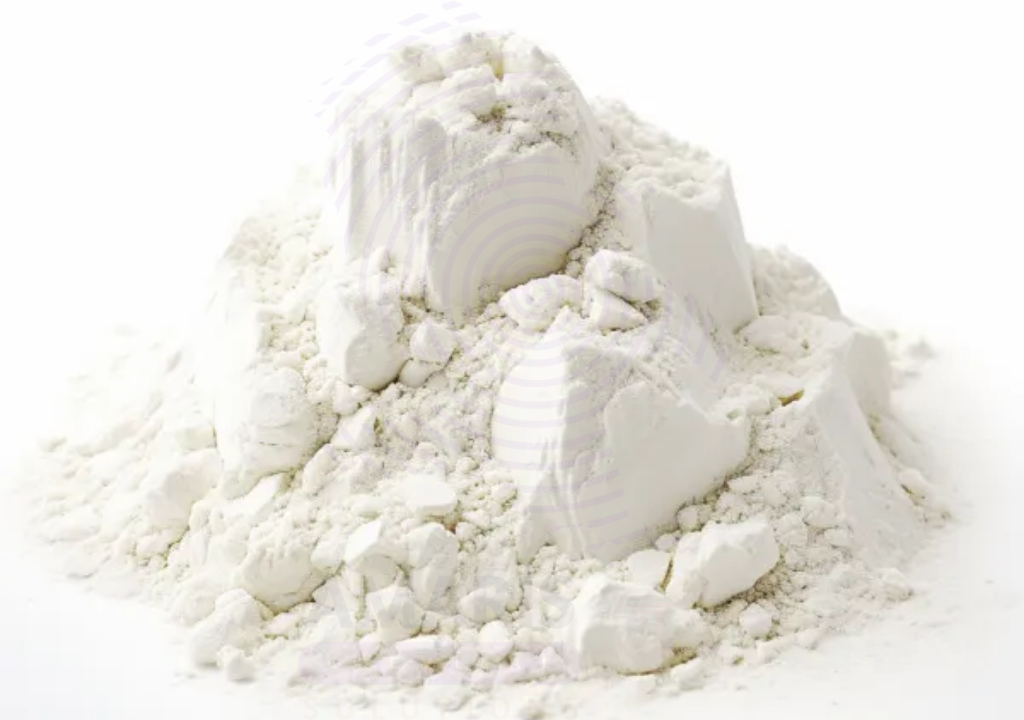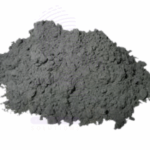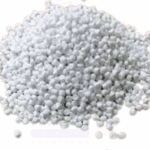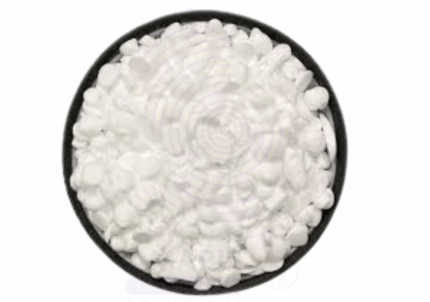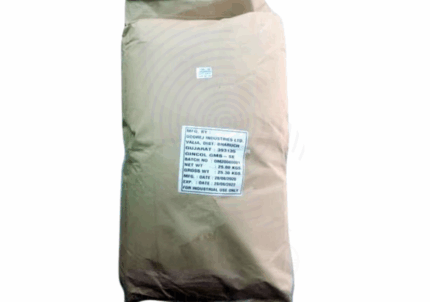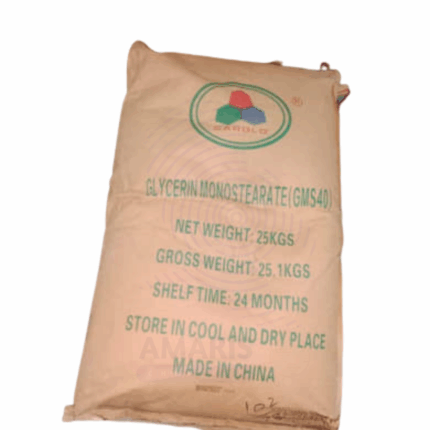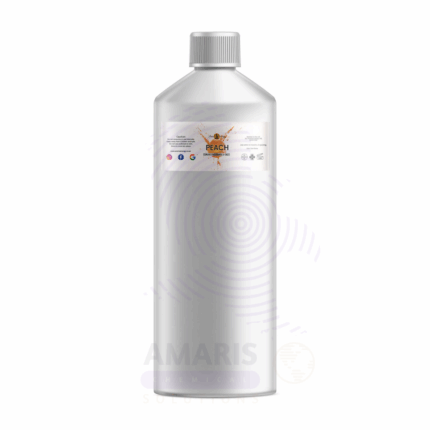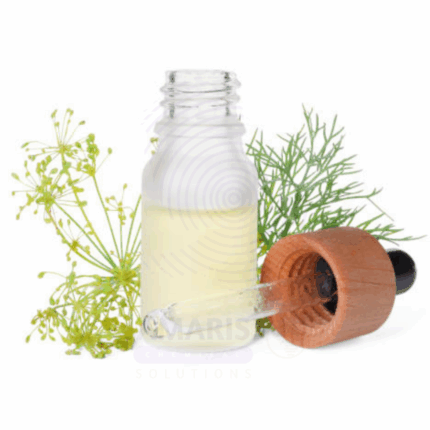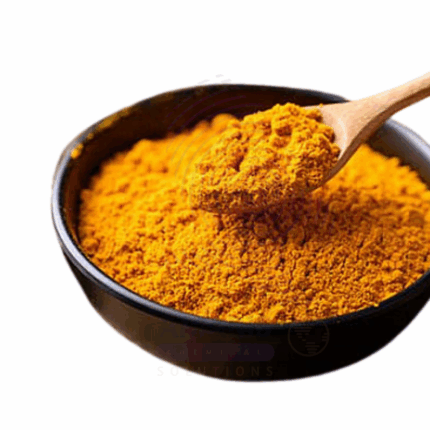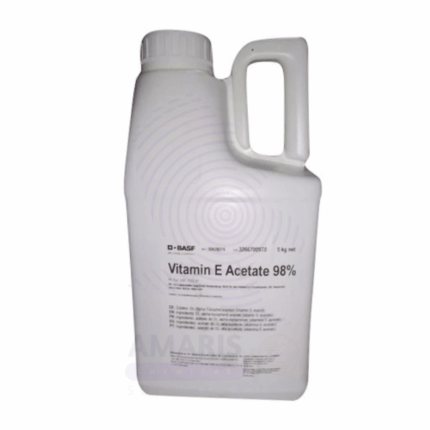Ferulic Acid
Whatsapp Order
Ferulic Acid is a naturally occurring hydroxycinnamic acid classified as a phenolic compound with potent antioxidant properties. It exists as a pale yellow to light brown crystalline powder with a faint characteristic odor. Ferulic Acid is commonly found in the cell walls of various plants such as rice bran, wheat, oats, coffee, apples, and fruits, where it plays a role in plant structural integrity and defense against environmental stress. It is valued across multiple industries—cosmetics, pharmaceuticals, nutraceuticals, food, and agriculture—due to its ability to neutralize free radicals, absorb UV radiation, and exhibit anti-inflammatory and antimicrobial activities.
Categories: Active Ingredient, Antioxidants
Tags: Antioxidant, Cosmetic ingredient, Ferulic Acid, Nutraceutical, Pharmaceutical ingredient
Description
Table of Contents
Toggle
Ferulic Acid
Primary Uses
- Cosmetics and Personal Care
- Acts as a powerful antioxidant in anti-aging skin care formulations, protecting skin cells from oxidative damage caused by UV radiation and pollution.
- Enhances the stability and effectiveness of vitamins C and E in topical formulations, boosting photoprotection and reducing signs of skin aging such as fine lines, wrinkles, and hyperpigmentation.
- Functions as a natural UV absorber, contributing to sunscreens and daily moisturizers with SPF.
- Used in serums, creams, lotions, and facial masks to improve skin texture, elasticity, and overall appearance.
- Pharmaceutical and Nutraceutical Industry
- Incorporated as an active ingredient in dietary supplements for its antioxidant, anti-inflammatory, and cardioprotective effects.
- Supports cardiovascular health by helping to reduce oxidative stress and improve blood circulation.
- Investigated for neuroprotective properties that may help prevent or delay neurodegenerative diseases like Alzheimer’s and Parkinson’s.
- Potential chemopreventive agent studied for anti-cancer effects due to its ability to inhibit tumor growth and proliferation in lab studies.
- Used in formulations targeting metabolic syndrome, diabetes, and liver protection.
- Food Industry
- Functions as a natural antioxidant additive to retard lipid oxidation and extend shelf life in oils, fats, and processed foods.
- Enhances the stability and nutritional profile of baked goods, beverages, and functional foods.
- Acts as a flavor enhancer and color stabilizer in various food products.
- Employed in natural food preservation to replace synthetic antioxidants.
- Agriculture and Plant Protection
- Used as a bio-stimulant in crop protection to strengthen plant cell walls and enhance resistance to pathogens and environmental stresses such as UV radiation and drought.
- Exhibits natural antimicrobial and antifungal properties, reducing reliance on synthetic pesticides.
- Applied in formulations to improve plant vigor and yield.
Secondary Uses
- Biomedical Research
- Utilized as a biochemical probe to study oxidative stress and inflammatory pathways.
- Investigated for its hepatoprotective effects in liver injury models.
- Used in experimental neuroprotection and chemoprevention studies.
- Material Science and Packaging
- Incorporated as a natural antioxidant additive in biodegradable polymer films and packaging materials to improve shelf life and reduce oxidative degradation.
- Explored in active packaging systems for food preservation.
- Textile Industry
- Employed as an antioxidant and UV stabilizer in fabric finishing to improve color retention and fabric durability under sunlight exposure.
KEY PRODUCT ATTRIBUTES
1. Basic Identification Attributes
- Chemical Name (IUPAC): (E)-3-(4-Hydroxy-3-methoxyphenyl)prop-2-enoic acid
- Common/Trade Name: Ferulic Acid
- CAS Number: 1135-24-6
- HS Code: 2915.90.90
- Molecular Formula: C10H10O4
- Synonyms: 4-Hydroxy-3-methoxycinnamic acid; 3-(4-Hydroxy-3-methoxyphenyl)acrylic acid
2. Physical & Chemical Properties
- Physical State: Crystalline powder
- Color & Odor: Pale yellow to light brown; faint characteristic odor
- Melting Point: 170–174 °C
- Boiling Point: Decomposes before boiling
- Density: ~1.53 g/cm³
- Solubility: Slightly soluble in water; soluble in ethanol, ethyl acetate, and DMSO
- pH: Weakly acidic; pKa approx. 4.58
- Stability: Stable under dry, cool, dark storage; sensitive to light and oxidation
3. Safety & Hazard Attributes
- Hazard Class (GHS): Not classified as hazardous; generally safe
- Toxicity: Low acute toxicity; non-irritant at typical use levels
- Exposure Limits: No occupational exposure limits established
4. Storage & Handling Attributes
- Storage Conditions: Store in tightly sealed containers in a cool, dry, dark place to prevent oxidation and moisture uptake
- Container Type: Glass or high-density polyethylene containers with moisture-proof packaging
- Shelf Life: Up to 24 months under recommended storage conditions
- Handling Precautions: Avoid dust inhalation and prolonged skin contact; minimize light and air exposure
5. Regulatory & Compliance Attributes
- Approved for use in food, cosmetics, and dietary supplements by FDA, EFSA, and other regulatory bodies
- Registered under REACH for industrial and cosmetic applications
- Usage limits regulated according to product type and country
6. Environmental & Health Impact
- Biodegradability: Readily biodegradable in aerobic conditions
- Ecotoxicity: Low toxicity to aquatic organisms at environmental concentrations
- Bioaccumulation: Not expected to bioaccumulate
- Carcinogenicity/Mutagenicity: Not classified; no evidence of carcinogenic or mutagenic effects
SAFETY HANDLING PRECAUTIONS
Safety Handling Precautions
- PPE Required: Protective gloves, safety goggles, dust mask when handling powder
- Handling Guidelines: Use in well-ventilated areas; avoid dust generation and inhalation; avoid skin and eye contact
- Storage Measures: Keep containers tightly closed, store away from heat, light, moisture, and incompatible materials
- Hygiene Practices: Wash hands thoroughly after handling; do not eat, drink, or smoke in work areas
First Aid Measures
- Inhalation: Move to fresh air immediately; seek medical attention if irritation or discomfort occurs
- Skin Contact: Wash affected area thoroughly with soap and water; seek medical advice if irritation develops
- Eye Contact: Rinse eyes with plenty of water for at least 15 minutes; consult physician if irritation persists
- Ingestion: Rinse mouth thoroughly; not expected to be harmful in small amounts; seek medical attention if large amounts ingested
Firefighting Measures
- Fire Hazards: Combustible solid; may emit toxic fumes such as carbon monoxide and carbon dioxide upon burning
- Extinguishing Media: Water spray, foam, dry chemical, or carbon dioxide (CO₂)
- Special Precautions: Firefighters should wear self-contained breathing apparatus and protective gear
- Decomposition Products: Carbon oxides and other toxic fumes
Related products
Cetyl Alcohol Flakes
Cetyl Alcohol Flakes is a high-purity fatty alcohol derived mainly from natural sources such as palm oil and coconut oil. Presented as white to off-white waxy flakes, this product contains at least 98% pure cetyl alcohol, ensuring consistent performance and quality. It is valued for its excellent emollient, thickening, and emulsifying properties and is widely used in personal care, pharmaceutical, and industrial formulations. The flake form facilitates easy handling, melting, and dosing in manufacturing processes. Cetyl Alcohol 98% Flakes contributes to the texture, stability, and moisturizing properties of various formulations, providing a non-greasy, smooth finish.
Cetyl Palmitate
Cetyl Palmitate is a naturally derived ester formed by the reaction of cetyl alcohol and palmitic acid. It appears as a white to off-white waxy solid with a mild fatty odor. This compound is widely used in cosmetic, pharmaceutical, and industrial formulations for its emollient, thickening, and texture-enhancing properties. Cetyl Palmitate imparts a smooth, creamy feel to products and contributes to improved stability and consistency in creams, lotions, balms, and ointments. Its film-forming and skin-conditioning attributes make it a preferred ingredient in personal care products as well as in specialty industrial applications.
Glycerol Monostearate
Glycerol Monostearate is a white to off-white, free-flowing powder composed of 50% monoglycerides of stearic and palmitic acids, typically derived from vegetable oils. It is a non-ionic emulsifier widely used in food, cosmetics, pharmaceuticals, plastics, and industrial applications. GMS functions as an emulsifying agent, stabilizer, thickener, anti-staling agent, and opacifier. In food, it improves texture and extends shelf life. In cosmetics and pharmaceuticals, it enhances creaminess and stability. GMS 50% is often blended with other emulsifiers or surfactants and is valued for its versatile functionality, safety, and compatibility with a wide range of ingredients.
Peach Fragrance Oil
Peach Fragrance Oil is a sweet, fruity, and soft aroma compound designed to mimic the scent of ripe, juicy peaches. It is widely used in personal care products, cosmetics, and home fragrance applications, providing a refreshing and appealing note. This fragrance oil is carefully formulated to deliver a long-lasting scent and is compatible with both oil-based and solvent-based systems. Ideal for use in candles, soaps, lotions, perfumes, and cleaning products, Peach Fragrance Oil ensures consistent quality, fragrance stability, and sensory appeal across a wide range of uses.
Terpeneless Dill Seed Oil
Terpeneless Dill Seed Oil is a refined essential oil obtained by removing the terpene fraction from dill seed (Anethum graveolens) oil. This process concentrates the oil’s delicate, sweet, and herbaceous aroma with subtle anise-like and citrusy notes, making it more stable and less prone to oxidation. Rich in carvone and other oxygenated compounds, Terpeneless Dill Seed Oil offers antimicrobial, antioxidant, and digestive support properties. It is valued in flavoring, fragrance, and therapeutic applications for its clean, mellow scent and enhanced shelf life.
Tumeric Powder
Tumeric Powder is a natural spice derived from the dried rhizomes of the Curcuma longa plant. Known for its bright yellow-orange color and warm, earthy flavor, turmeric is widely used as a culinary spice, natural colorant, and traditional medicine ingredient. It contains the active compound curcumin, which exhibits antioxidant, anti-inflammatory, and antimicrobial properties. Turmeric Powder is valued both as a food ingredient and for its applications in cosmetics and pharmaceutical formulations. It is finely ground to ensure uniform texture and easy incorporation into various products.
Vitamin E Acetate (DL-Alpha-Tocopheryl Acetate)
Vitamin E Acetate (DL-Alpha-Tocopheryl Acetate), chemically known as DL-Alpha-Tocopheryl Acetate, is a stable, synthetic form of Vitamin E used widely in pharmaceuticals, cosmetics, food fortification, and dietary supplements. As an esterified form of tocopherol, it offers superior oxidative stability, making it ideal for formulations requiring extended shelf life. It functions as a potent antioxidant, protecting cells from oxidative damage and supporting immune and skin health.
Vitamin E Acetate Oily
Vitamin E Acetate Oily, also known as DL-Alpha-Tocopheryl Acetate, is a synthetic, oil-soluble form of Vitamin E with high purity and exceptional oxidative stability. This viscous liquid is ideal for applications requiring direct incorporation into oil-based systems such as soft gel capsules, cosmetic formulations, and fortified edible oils. Its stability under processing and storage conditions makes it a preferred form of Vitamin E for nutritional, pharmaceutical, cosmetic, and food-grade applications.


 Preservatives(food)
Preservatives(food) Flavor Enhancers
Flavor Enhancers Acidulants
Acidulants Sweeteners
Sweeteners Antioxidants
Antioxidants Colorants(food)
Colorants(food) Nutraceutical Ingredients (food)
Nutraceutical Ingredients (food) Nutrient Supplements
Nutrient Supplements Emulsifiers
Emulsifiers
 Collectors
Collectors Dust Suppressants
Dust Suppressants Explosives and Blasting Agents
Explosives and Blasting Agents Flocculants and Coagulants
Flocculants and Coagulants Frothers
Frothers Leaching Agents
Leaching Agents pH Modifiers
pH Modifiers Precious Metal Extraction Agents
Precious Metal Extraction Agents
 Antioxidants(plastic)
Antioxidants(plastic) Colorants (Pigments, Dyes)
Colorants (Pigments, Dyes) Fillers and Reinforcements
Fillers and Reinforcements Flame Retardants
Flame Retardants Monomers
Monomers Plasticizers
Plasticizers Polymerization Initiators
Polymerization Initiators Stabilizers (UV, Heat)
Stabilizers (UV, Heat)
 Antifoaming Agents
Antifoaming Agents Chelating Agents
Chelating Agents Coagulants and Flocculants
Coagulants and Flocculants Corrosion Inhibitors
Corrosion Inhibitors Disinfectants and Biocides
Disinfectants and Biocides Oxidizing Agents
Oxidizing Agents pH Adjusters
pH Adjusters Scale Inhibitors( water)
Scale Inhibitors( water)
 Antioxidants(cosmetic)
Antioxidants(cosmetic) Emollients
Emollients Fragrances and Essential Oils
Fragrances and Essential Oils Humectants
Humectants Preservatives
Preservatives Surfactants(cosmetic)
Surfactants(cosmetic) Thickeners
Thickeners UV Filters
UV Filters
 Fertilizers
Fertilizers Soil Conditioners
Soil Conditioners Plant Growth Regulators
Plant Growth Regulators Animal Feed Additives
Animal Feed Additives Biostimulants
Biostimulants Pesticides (Herbicides, Insecticides, Fungicides)
Pesticides (Herbicides, Insecticides, Fungicides)
 Active Pharmaceutical Ingredients (APIs)
Active Pharmaceutical Ingredients (APIs) Excipients
Excipients Solvents(pharmaceutical)
Solvents(pharmaceutical) Antibiotics
Antibiotics Antiseptics and Disinfectants
Antiseptics and Disinfectants Vaccine Adjuvants
Vaccine Adjuvants Nutraceutical Ingredients (pharmaceutical)
Nutraceutical Ingredients (pharmaceutical) Analgesics & Antipyretics
Analgesics & Antipyretics
 Analytical Reagents
Analytical Reagents Solvents(lab)
Solvents(lab) Chromatography Chemicals
Chromatography Chemicals Spectroscopy Reagents
Spectroscopy Reagents microbiology-and-cell-culture-reagents
microbiology-and-cell-culture-reagents Molecular Biology Reagents
Molecular Biology Reagents Biochemical Reagents
Biochemical Reagents Inorganic and Organic Standards
Inorganic and Organic Standards Laboratory Safety Chemicals
Laboratory Safety Chemicals Specialty Laboratory Chemicals(Special Laboratory Equipment)
Specialty Laboratory Chemicals(Special Laboratory Equipment)
 Demulsifiers
Demulsifiers Hydraulic Fracturing Fluids
Hydraulic Fracturing Fluids Scale Inhibitors(oil)
Scale Inhibitors(oil) Surfactants(oil)
Surfactants(oil) Drilling Fluids
Drilling Fluids
 Dyes and Pigments
Dyes and Pigments Bleaching Agents
Bleaching Agents Softening Agents
Softening Agents Finishing Agents
Finishing Agents Antistatic Agents
Antistatic Agents
 Admixtures
Admixtures Waterproofing Agents
Waterproofing Agents Sealants and Adhesives
Sealants and Adhesives Curing Compounds
Curing Compounds Concrete Repair Chemicals
Concrete Repair Chemicals Anti-Corrosion Coatings
Anti-Corrosion Coatings
 Surfactants(cleaning)
Surfactants(cleaning) Builders
Builders Enzymes
Enzymes Solvents (Cleaning)
Solvents (Cleaning) Fragrances
Fragrances
 Electronic Chemicals
Electronic Chemicals Catalysts
Catalysts Lubricants
Lubricants Photographic Chemicals
Photographic Chemicals Refrigerants
Refrigerants Automotive chemicals
Automotive chemicals Pyrotechnic Chemicals
Pyrotechnic Chemicals
 Biodegradable Surfactants
Biodegradable Surfactants Bio-based Solvents
Bio-based Solvents Renewable Polymers
Renewable Polymers Carbon Capture Chemicals
Carbon Capture Chemicals Wastewater Treatment Chemicals
Wastewater Treatment Chemicals
 Pigments
Pigments Solvents(paint)
Solvents(paint) Specialty Coatings
Specialty Coatings Binders/Resins
Binders/Resins Additives
Additives Driers
Driers Anti-Corrosion Agents
Anti-Corrosion Agents Functional Coatings
Functional Coatings Application-Specific Coatings
Application-Specific Coatings
 Fresh Herbs
Fresh Herbs Ground Spices
Ground Spices Whole Spices
Whole Spices Spice Blends
Spice Blends Dried Herbs
Dried Herbs
 Leavening Agents
Leavening Agents Dough Conditioners
Dough Conditioners Flour Treatments
Flour Treatments Fat Replacers
Fat Replacers Decoratives
Decoratives Preservatives(baking)
Preservatives(baking)
 Plasticizers & Softeners
Plasticizers & Softeners Reinforcing Agents
Reinforcing Agents Adhesion Promoters
Adhesion Promoters Vulcanizing Agents
Vulcanizing Agents Antidegradants
Antidegradants Blowing Agents
Blowing Agents Fillers & Extenders
Fillers & Extenders Accelerators & Retarders
Accelerators & Retarders